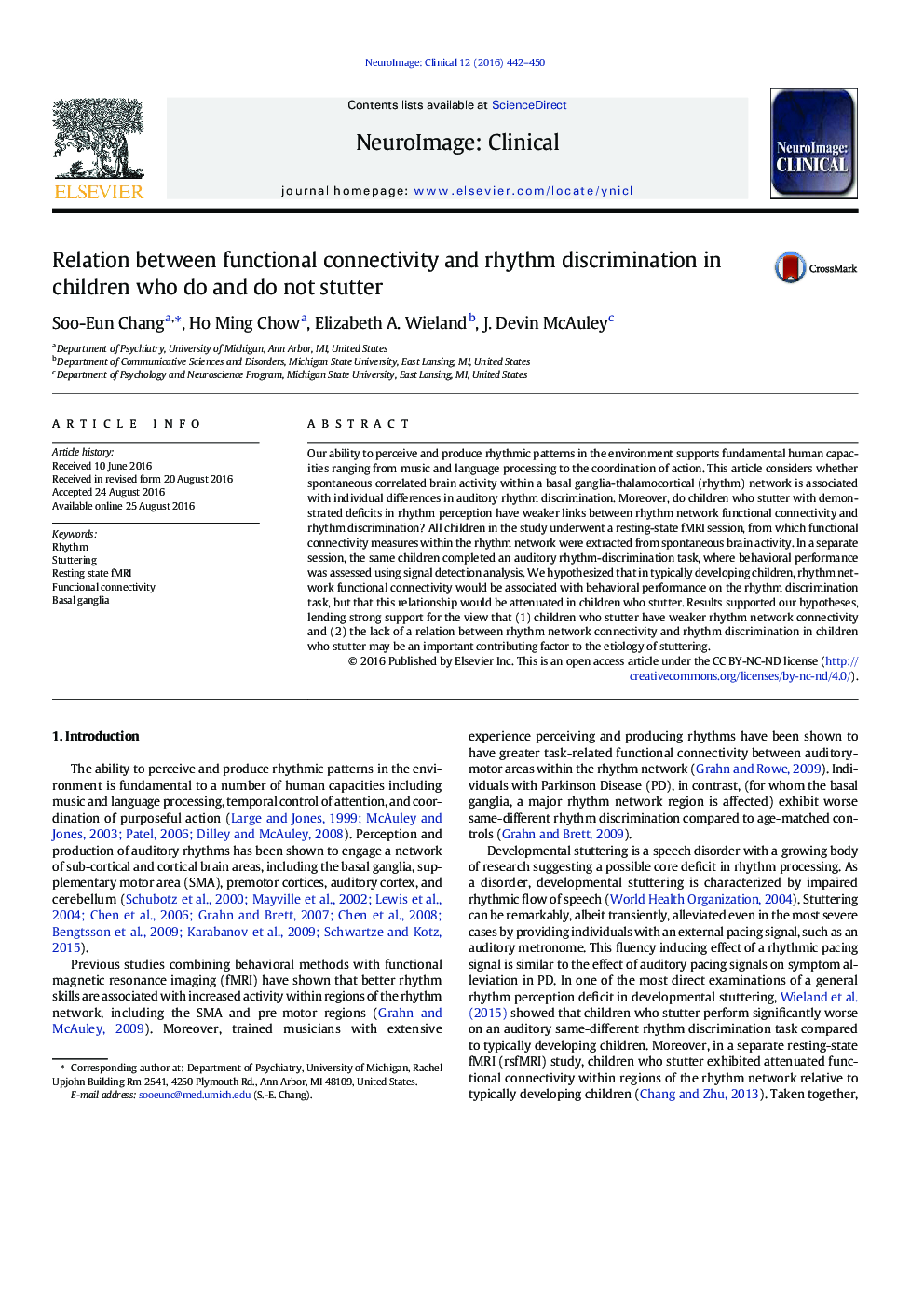| کد مقاله | کد نشریه | سال انتشار | مقاله انگلیسی | نسخه تمام متن |
|---|---|---|---|---|
| 3074833 | 1580955 | 2016 | 9 صفحه PDF | دانلود رایگان |
• Functional connectivity in rhythm network compared in children who do/don't stutter
• Relation between functional connectivity and rhythm discrimination examined
• Connectivity and rhythm perception are related in typically-developing children.
• No such association observed in age-matched children who stutter.
• Deficient rhythm-network connectivity may be a contributing factor in stuttering.
Our ability to perceive and produce rhythmic patterns in the environment supports fundamental human capacities ranging from music and language processing to the coordination of action. This article considers whether spontaneous correlated brain activity within a basal ganglia-thalamocortical (rhythm) network is associated with individual differences in auditory rhythm discrimination. Moreover, do children who stutter with demonstrated deficits in rhythm perception have weaker links between rhythm network functional connectivity and rhythm discrimination? All children in the study underwent a resting-state fMRI session, from which functional connectivity measures within the rhythm network were extracted from spontaneous brain activity. In a separate session, the same children completed an auditory rhythm-discrimination task, where behavioral performance was assessed using signal detection analysis. We hypothesized that in typically developing children, rhythm network functional connectivity would be associated with behavioral performance on the rhythm discrimination task, but that this relationship would be attenuated in children who stutter. Results supported our hypotheses, lending strong support for the view that (1) children who stutter have weaker rhythm network connectivity and (2) the lack of a relation between rhythm network connectivity and rhythm discrimination in children who stutter may be an important contributing factor to the etiology of stuttering.
Journal: NeuroImage: Clinical - Volume 12, 2016, Pages 442–450
